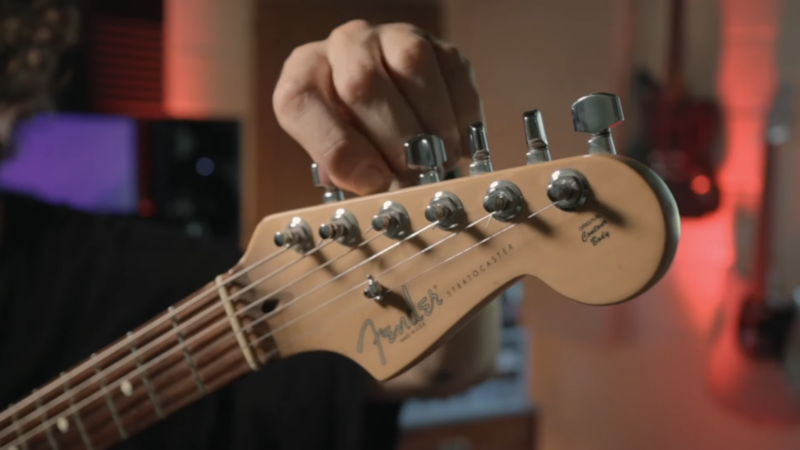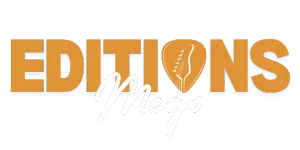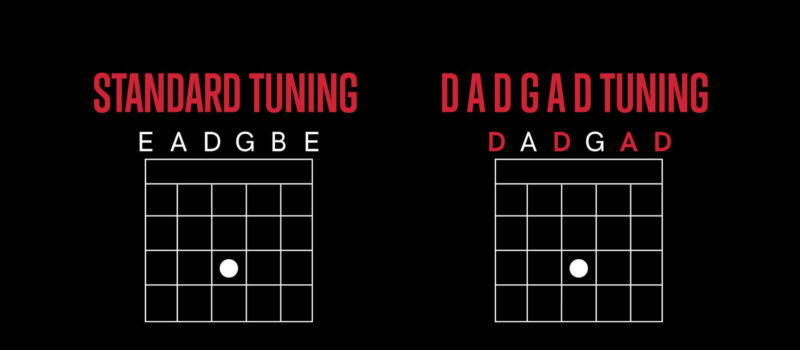In the realm of music, the standard tuning of E-A-D-G-B-E is considered the bedrock upon which countless melodies and harmonies have been constructed. However, for adventurous guitarists seeking to expand their sonic horizons, there lies a world of alternative tunings, each offering a unique sonic palette and creative possibilities.
Among these, DADGAD stands out as a captivating and versatile option, particularly for those drawn to the mystical allure of Celtic and folk music. DADGAD, also known as “Celtic tuning,” involves lowering the first, second, and sixth strings of the guitar by a whole step, resulting in the tuning D2-A2-D3-G3-A3-D4.
This seemingly minor adjustment transforms the instrument’s tonal landscape, imbuing it with a rich, resonant sound that evokes images of ancient bards and mystical landscapes.
Table of Contents
ToggleHow to Tune Your Guitar to DADGAD
Tuning your guitar to DADGAD is a straightforward process that involves adjusting only three strings. Here’s a step-by-step guide divided into three subsections:
Start with your guitar in standard tuning: E2, A2, D3, G3, B3, E4.
Adjusting the Strings

Sixth String: Lower the E2 (sixth string) down a whole step to D2. You can match this to the pitch of the D3 (fourth string) at the 12th fret.
Second String: Tune the B3 (second string) down a whole step to A3. This can be matched with the pitch of the G3 (third string) at the second fret.
First String: Lower the E4 (first string) down a whole step to D4, aligning it with the pitch of the D3 (fourth string) at the seventh fret.
Final Check
After adjusting these strings, go through each string again to ensure they are correctly tuned. Optionally, you can use a capo to transpose the DADGAD tuning to a different key.
Placing a capo on the second fret, for instance, changes the tuning to EBEABE, which is DADGAD transposed up by a whole step.
Benefits and Challenges

Playing in DADGAD tuning offers a unique experience with its own set of advantages and disadvantages. Here’s a breakdown into three key subsections.
Pros
- Rich and Complex Chords: DADGAD allows for playing intricate chords using simple shapes, utilizing open strings for drones and harmonies. For instance, a D5 chord can be played by strumming all open strings, and a Gsus2 by fretting the fifth string at the second fret.
- Flexibility in Modes and Scales: This tuning isn’t confined to major or minor tonalities, providing freedom to explore different modes like Dorian, Mixolydian, or Lydian, with open strings serving as a reference.
- Enhanced Fingerstyle Play: DADGAD enhances fingerstyle playing by creating fuller sounds with fewer notes and allows for melodic, arpeggio, and percussive effects using open strings and lower strings for bass lines.
Cons
- Learning Curve: This tuning requires learning new chord and scale shapes, as standard ones don’t apply. Notes on the first, second, and sixth strings also need transposition from standard tuning.
- Limited Chord Choices: Some chords become difficult or impossible to play, and avoiding dissonant intervals that clash with open strings is necessary. For example, standard major or minor triads require fretting three strings to achieve the chord’s third.
- Potential Tuning Issues: Changing string tension can lead to tuning and intonation challenges, necessitating adjustments in the guitar’s action, bridge, or nut, or the use of heavier gauge strings to maintain tension and tone.
Adapting to DADGAD
- Practice and Experimentation: Familiarizing yourself with the new chord shapes and experimenting with different musical styles can help overcome the challenges.
- Equipment Adjustments: Being prepared to make necessary adjustments to your guitar setup can ensure a smoother transition to DADGAD.
Its Origin
Amidst the diverse world of guitar tunings, DADGAD stands out as a captivating and versatile alternative to the standard arrangement of E-A-D-G-B-E. This unique tuning, also known as Celtic tuning, transforms the guitar into an instrument of resonant and evocative sounds, offering a fresh perspective on musical expression.
DADGAD’s distinctive character arises from the lowering of the first, second, and sixth strings by a whole step from standard tuning. This alteration produces an open D sus4 chord, creating a rich and resonant foundation for melodies and harmonies. The tuning’s name reflects the notes from low to high: D2 A2 D3 G3 A3 D4.
Celtic Roots and Global Influence
The origins of DADGAD tuning can be traced back to the rich tapestry of Celtic musical traditions. Its distinctive open D sus4 chord resonated deeply with Celtic melodies, forming the basis for traditional folk songs and improvisational explorations.
In the 1960s, DADGAD gained wider recognition through the pioneering work of Davey Graham, a British folk guitarist. Inspired by the enchanting sounds of the oud, a Middle Eastern stringed instrument, Graham experimented with alternative tunings to capture the oud’s essence. DADGAD emerged as his chosen tuning, and he showcased its potential through his instrumental piece “She Moved Through the Fair”.
Tune for All Seasons
The appeal of DADGAD tuning extends far beyond its Celtic roots, finding its way into a wide range of musical genres. Folk, acoustic, and even rock musicians have embraced DADGAD’s versatility, utilizing its open chord structure and resonant sound to create unique and evocative melodies and harmonies.
Notable artists such as Joni Mitchell, Jimmy Page, Pierre Bensusan, Laurence Juber, and Martin Simpson have all ventured into the realm of DADGAD tuning, adding their unique voices to the tuning’s rich legacy. DADGAD’s ability to evoke a wide spectrum of emotions, from melancholic introspection to exuberant joy, has made it a valuable tool for musical expression across diverse genres.
How to Find Songs and Artists with the Tune
If you want to learn some songs and artists that use DADGAD, you can search online for tabs, videos, or tutorials that show you how to play them. You can also listen to some recordings or performances that feature DADGAD tuning and try to figure out the chords and melodies by ear.
Here are some examples of songs and artists that use DADGAD:
- “She Moved Through the Fair” by Davey Graham
- “Black Mountain Side” by Led Zeppelin
- “Kashmir” by Led Zeppelin
- “The Rain Song” by Led Zeppelin
- “Big Yellow Taxi” by Joni Mitchell
- “The Blarney Pilgrim” by Martin Simpson
- “The First Cut Is the Deepest” by Cat Stevens
- “Drifting” by Andy McKee
- “The Last of the Mohicans” by Dougie MacLean
- “Bamboulé” by Pierre Bensusan
FAQ
Is DADGAD suitable for electric guitars?
DADGAD tuning can be used effectively on both electric and acoustic guitars. It offers a unique sound that suits various musical styles, although it’s often associated with acoustic folk music. Electric guitar players may find it particularly useful for creating atmospheric and ambient soundscapes.
Does DADGAD strain the guitar or need special strings?
DADGAD tuning generally does not put excessive strain on the guitar neck, though it does change the tension of the strings slightly. It’s always advisable to check and adjust the guitar setup if needed. Standard strings work fine, but some players prefer slightly heavier gauge strings for a fuller sound.
What other music genres use DADGAD?
Beyond Celtic and folk music, DADGAD tuning is also popular in genres like world music, fingerstyle jazz, and even in some forms of rock and blues. Its versatility allows for creative exploration across a broad spectrum of musical styles.
How are barre chords affected in DADGAD?
DADGAD tuning changes the way barre chords are played. Some standard barre chords may become easier, while others might require new fingerings. The open strings often contribute to a fuller sound in chords, so players might find new and interesting ways to form barre chords.
Is switching between standard and DADGAD easy in performances?
Switching between standard tuning and DADGAD during a performance can be done, but it requires practice. Some players use two guitars, each set up for one of the tunings, to make the transition smoother during live performances.
What impact does a capo have in DADGAD?
Using a capo in DADGAD tuning transposes the music to a higher key while maintaining the relative tuning between the strings. This means chord shapes and scale patterns remain the same, but the actual pitch of the music changes. It’s a useful technique for matching the tuning to vocal ranges or other instruments.
Final Words
DADGAD tuning represents a fascinating divergence from the standard E-A-D-G-B-E tuning in guitar music, offering musicians a gateway to uncharted creative territories. This alternative tuning, with its roots in Celtic music, modifies the standard tuning by lowering the first, second, and sixth strings, creating a D sus4 chord that lends a rich, resonant sound ideal for folk, acoustic, and even rock compositions.
While it introduces a learning curve and necessitates new chord and scale formations, the sonic rewards are considerable, providing enhanced harmonic richness and textural depth. DADGAD’s widespread adoption across various musical genres testifies to its versatility and enduring appeal, making it an invaluable tool for guitarists seeking to broaden their musical expression.
Whether through practicing basic chords and scales, adapting the guitar setup, or exploring songs by artists who have mastered this tuning, guitarists can unlock the unique potential of DADGAD tuning and contribute to its evolving musical legacy.










